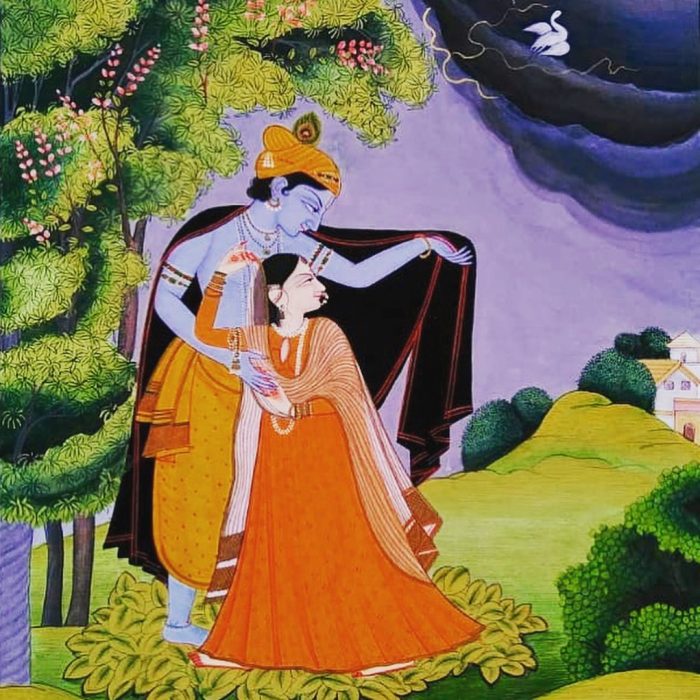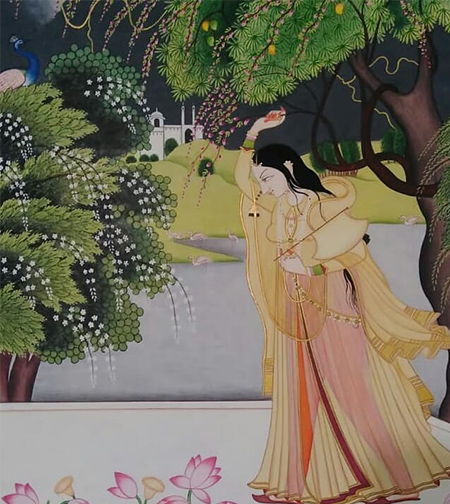
Miniature paintings in its traditional and newer forms are holding their place in international museums from New York to Scotland. In fact, they seem to capture one’s emotions much like a drama or a dancer’s expression. The lyrical themes of ancient stories, the vibrant colors, flora and fauna all combine to create a lasting effect on one’s soul. Even the Austrian Empress Maria Theresa developed a taste for miniature art in its 17th century Mughal form, and to this day visitors to the Schonbrunn palace will be delighted by the “Chamber of Millions,” where every inch of the wall ornately glorifies numerous miniature paintings.
Thus, it is no surprise that The Metropolitan Museum of Art in New York will include a form of miniature paintings in its exhibit to celebrate its 150th anniversary in 2020. With Mrs. Nita Ambani’s passion for Indian art combined with her recent appointment to the board of the The Met Museum, for sure miniature art has places to go!
Strokes of History
While the Mughals brought Persian miniature art to India, the royal courts of the Rajputs refined it further with local flavor. Miniature paintings of Himachal are influenced by the Rajasthani miniatures due to the family relations of Pahadi kings with the royal Rajput courts. Kangra miniatures soon went on to develop its own style although the Guler style gave it birth. The Guler art flourished in the ancient Punjab hills, which consisted of roughly 35 kings of Punjab. The paintings mostly evoke feelings of “bhakti,” or devotion, love and longing, but when used as story telling, they mirror the same emotion in the viewer. Perhaps this is how Mariam Ekhtiar, Associate Curator, Department of Islamic Art, felt as she saw the miniature painting, “The Nightmare Dream of a King, The Fearsome Aftermath of the Battle of Kurukshetra,” at The Met Museum, New York. Ekhtiar says, what moved her was the paintings immediacy, “There is a fierce and gruesome battle…with splashes of blood ingeniously splattered throughout the composition.”
The Kangra Code

However, as miniature paintings progressed to the Kangra region, it developed its own code. Lyrical and romantic themes took precedence- perhaps influenced by the beautiful greenery, hills and dales, flowers, birds and natural beauty of the Kangra Valley. Kangra miniature paintings bring out the tenderness of feelings as illustrated in themes of Radha and Krishna’s sweet meetings or the dancing Gopis of Gokul and Vrindavan or even animals charmed by the melody of a singing princess or simply elegant ladies doing their household chores. Each painting seems to cast a spell on the viewer with its enchanting stories.
Today, Kangra miniature painting takes pride in developing its rich and vibrant art keeping with the tradition of using handmade colors and paper. The colors are extracted from stones and plants and the paintbrushes are made from either squirrel hair or bird feather. This traditional style of fine detailed work and natural pigments takes anywhere from a few weeks to months to complete. With machine-made reprints, the true art was on the verge of disappearing, but thanks to local organizations, the art is revived!
The Kangra Arts Promotion Society (KAPS), is a local non-profit based in Dharamshala, with a vision to promote and support artists and revive this delicate art form for future generations. They take an active role in teaching the art as well as helping artists support themselves. KAPS also urges patrons to promote the art and buy paintings to encourage the fine-hand behind them. As a patron of this heritage art, the rooms at WelcomHeritage Grace Hotel feature the work of many artists from the Kangra school of miniature painting.
The world fell in love with miniature art centuries ago- perhaps the human spirit delights at its ironic play of simplicity and elegance, vibrancy and subtleness and of course its natural process that requires the warmth of human hands. Now that certainly won’t go out of fashion!



